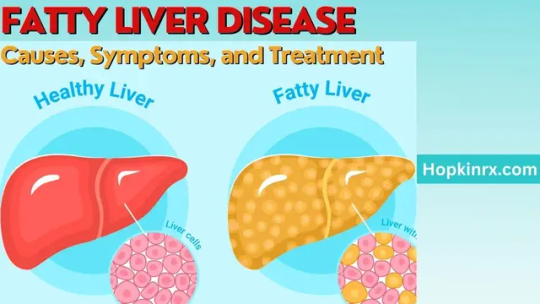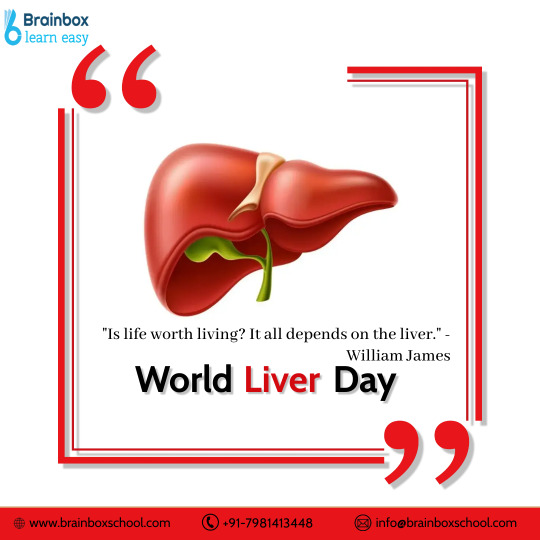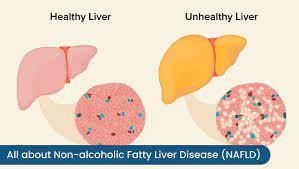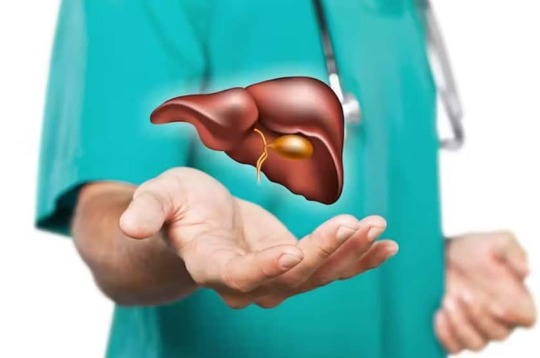#fatty liver prevention
Explore tagged Tumblr posts
Video
youtube
যে ৫ ফল খেলেই লিভারে জমে থাকা ময়লা সাফ হবে দ্রুত।
#youtube#লিভার ডিটক্স (Liver detox)#লিভারের যত্ন#স্বাস্থ্যকর ফল#লিভার পরিষ্কার ফল#অ্যান্টিঅক্সিডেন্ট সমৃদ্ধ ফল#লেবু এবং সাইট্রাস ফল#গ্রিন অ্যাপল উপকারিতা#বীটরুট এবং লিভার#পেঁপে ও লিভার স্বাস্থ্য#আঙুরের উপকারিতা#ফ্যাটি লিভার প্রতিরোধ#প্রাকৃতিক ডিটক্স ডায়েট#লিভার ফাংশন উন্নতি#ভিটামিন সি সমৃদ্ধ ফল#স্বাস্থ্য সচেতনতা#Liver detox fruits#Healthy liver diet#Natural liver cleanse#Antioxidant-rich fruits#Citrus fruits for liver#Grapefruit benefits#Green apple for liver#Papaya health benefits#Beetroot and liver health#Fatty liver prevention#Liver function improvement#Vitamin C fruits#Liver-friendly diet#Grape detox properties
0 notes
Text
#Fatty liver disease#risk factors#long-term effects#liver health#Dr. Vatsal Mehta#best gastroenterologist in Ahmedabad#non-alcoholic fatty liver disease#liver damage#liver cirrhosis#fatty liver prevention
0 notes
Text
Fatty Liver Disease: Important Causes, Symptoms, and Treatment
Fatty Liver Disease: Important Causes, Symptoms, and TreatmentIntroductionWhat is Fatty Liver Disease?Causes of Fatty Liver Disease Poor Dietary Habits Sedentary Lifestyle Obesity Alcohol ConsumptionSymptoms of Fatty Liver Disease Fatigue Abdominal Discomfort Jaundice SwellingDiagnosing Fatty Liver Disease Blood Tests Imaging Studies Liver BiopsyTreatment and Management Lifestyle Changes Balanced…

View On WordPress
#Alcoholic fatty liver#Fatty liver causes#Fatty liver complications#Fatty liver diagnosis#Fatty liver management#Fatty liver prevention#Fatty liver risks#Fatty liver symptoms#Fatty liver treatment#Hepatic steatosis#Liver and alcohol#Liver biopsy#Liver care#Liver cirrhosis#Liver damage#Liver disease progression#Liver exercise benefits#Liver function#Liver Health#Liver health tips#Liver inflammation#Liver steatosis#Liver-friendly diet#Non-alcoholic fatty liver#Obesity and fatty liver
0 notes
Text

We’re discussing an incredibly important topic that affects millions of people around the world – treatment for liver disease. If you or someone you know is struggling with this condition, stick with us as we explore it. Best treatments available....
.
.
.
Sandhya Jani Devi Health Resort
7042735658
#fatty liver treatment#fatty liver#fatty liver disease#treatment of fatty liver#fatty liver diet#fatty liver symptoms#liver disease#liver#choline fatty liver treatment#fatty liver prevention#liver cancer treatment#treatment#fatty liver home remedies#fatty liver exercise#liver cirrhosis treatment#liver cleanse#symptoms of fatty liver#how to cure fatty liver#fatty liver explained#liver detox#fatty liver diet recipes#non alcoholic fatty liver disease
1 note
·
View note
Text
#Liver disease#Hepatitis#Hepatitis A#B#C#D#E#Chronic liver disease#Liver damage#Cirrhosis#Liver fibrosis#Hepatocellular injury#Liver inflammation#Alcoholic liver disease#Non-alcoholic fatty liver disease (NAFLD)#Liver cancer (Hepatocellular carcinoma)#Viral transmission#Bloodborne pathogens#Contaminated food and water#Unprotected sex#Needle sharing#Vertical transmission (mother to child)#Immune system response#Risk factors for liver disease#Hepatitis vaccination#Liver biopsy#Liver function tests#Viral load#Liver transplantation#Preventive measures for hepatitis
2 notes
·
View notes
Text

Advanced Liver Screening for Early Detection in Ludhiana
Don’t wait for symptoms. Dr. Nitin Behl offers liver screening tools to catch issues early and treat them right.
#Liver Screening#Preventive Checkup#Dr. Nitin Behl#Fatty Liver#Hepatitis#Cirrhosis#Early Diagnosis#Ludhiana Clinic#Liver Health#GI Specialist
0 notes
Text
Would have been nice to be informed that fatty liver disease runs in my family BEFORE I got diagnosed with it
#*throws water balloons at poppet of my aunt*#my mom didn't even know her mom and her sister has/had it#my grandmother died of liver cancer but she was a heavier drinker than i and neither of us knew she had fatty liver for decades#until like 2 days ago before my aunt deigned to tell us#could have saved me a year of scanxiety trying to figure what was going on with my liver enzymes when all i knew was cancer ran in my fam#and maybe i could have prevented it entirely had i known i was a genetic risk for fatty liver alcohol-induced or not#i just assumed it was a another random bullshit disease popping up out of nowhere#but at last! something genetic for once!#*throws more water balloons at poppet of aunt*#anyway now my mom is anxious to get tested and I've got to stop drinking what little i do drink#I'll miss you elderberry mead#alcohol#just chronic illness things#no for serious whyever FOR would the family's Chronic Illness Georg ever need to be informed of genetic illness??#*DUMPS A FULL GATORADE KEG ALL OVER AUNT'S POPPET!*
2 notes
·
View notes
Text

Did you know 33% of the population has Fatty Liver? Yes, 1 in 3 people has it.
What is Fatty Liver Disease?
Imagine your liver as a silent superhero, working tirelessly to filter toxins, produce proteins, and regulate metabolism. Now, imagine this superhero is slowly being "fattened" by the accumulation of fat in its cells. This is fatty liver disease, also known as hepatic steatosis.
The main cause of non-alcoholic fatty liver disease (NAFLD), the most common form, is lifestyle. Excess weight, obesity, diabetes, and insulin resistance are the main culprits. But don't think that lovers of a good drink are off the hook – alcoholic fatty liver disease (AFLD) is also a reality, caused by excessive alcohol consumption. Understanding these distinctions is crucial because the approach to managing and reversing each type may vary. For NAFLD, lifestyle modifications are key, while AFLD often requires reducing or eliminating alcohol intake along with lifestyle changes.
The Stages of Fatty Liver Disease: A Silent Journey
Fatty liver disease is like a slow-burning fire that can start almost without you noticing. It develops in stages, and it's crucial to understand each of them to take preventive measures or, if necessary, seek treatment at first sign of any symptoms.
Stage 1: Simple Steatosis - The Onset of Fat Accumulation
This is the first stage where fat begins to accumulate in the liver but without causing inflammation. At this stage, most people do not show symptoms. It's like a silent alarm that needs to be heeded. Early detection through routine medical check-ups can be a game-changer, allowing for timely intervention and lifestyle adjustments that can halt or even reverse the disease.
Stage 2: Steatohepatitis (NASH) - The Flame of Inflammation
Here, the fat accumulated in the liver starts to cause inflammation, and the liver can begin to suffer damage. Symptoms are still vague, such as fatigue, loss of appetite, or abdominal pain. Nothing that makes you stop, but it does raise a warning sign. In this stage, more specific diagnostic tests, like a liver biopsy, might be necessary to determine the extent of liver damage and guide more targeted treatment strategies.
Stage 3: Fibrosis - Scarring of the Liver
Chronic inflammation leads to the formation of scar tissue in the liver, interfering with its function. Fibrosis can progress slowly but may result in cirrhosis, a severe condition. It's like a yellow light flashing frantically. Managing fibrosis requires a concerted effort to halt liver damage and improve liver health, often involving medications and continued lifestyle improvements.
Stage 4: Cirrhosis - The Devastated Liver
The liver becomes so damaged and scarred that it can no longer function properly. Cirrhosis is the final stage of fatty liver disease and can lead to liver failure, the need for a transplant, or, unfortunately, death. It's the red alert where the situation becomes critical. For those with cirrhosis, advanced medical treatments, including possible liver transplantation, and strict lifestyle adherence are crucial to manage the condition and prevent further complications.
The Good News: Fatty Liver Disease Can Be Reversed!
Yes, you read that right! Fatty liver disease can be reversed, especially in the early stages. It's like putting out the fire before it spreads and causes irreversible damage. But to do so, you need to act quickly and with determination. Commitment to lifestyle changes and regular monitoring can significantly improve liver health and overall well-being.
0 notes
Text

🌟 Join us in commemorating World Liver Day on April 19th! 🌟
👉 Did you know that your liver is one of the hardest-working organs in your body? It plays a vital role in digestion, metabolism, and detoxification. That's why it's crucial to keep it healthy!
💡 On #WorldLiverDay, let's raise awareness about liver health and the importance of prevention. From hepatitis to fatty liver disease, understanding these conditions can help us take proactive steps towards better liver health.
#🌟 Join us in commemorating World Liver Day on April 19th! 🌟#👉 Did you know that your liver is one of the hardest-working organs in your body? It plays a vital role in digestion#metabolism#💡 On#let's raise awareness about liver health and the importance of prevention. From hepatitis to fatty liver disease#understanding these conditions can help us take proactive steps towards better liver health.
0 notes
Text
NAFLD and Nursing: Essential Information and Interventions
What is Non-Alcoholic Fatty Liver Disease (NAFLD)? NAFLD stands for Non-Alcoholic Fatty Liver Disease and is one of the most common liver disorders globally. The liver plays an essential role in many body functions, from producing bile that helps digest fats to storing glucose for energy. NAFLD occurs when there is an accumulation of excess fat in liver cells, that is not due to significant…

View On WordPress
#cirrhosis#Diet#elevated liver enzymes#exercise#fatigue#high blood sugar#insulin resistance#liver cancer#liver disease#liver inflammation#medication#NAFLD#NASH#Non-Alcoholic Fatty Liver Disease#non-alcoholic steatohepatitis#Obesity#prevention#triglycerides#weight management
0 notes
Text
#liver diseases#Liver disorders#Hepatic conditions#Liver health#Liver problems#Hepatitis#Cirrhosis#Fatty liver#Liver cancer#Liver function#Liver symptoms#Liver diagnosis#Liver treatment#Liver disease management#Liver disease prevention#Liver disease awareness
0 notes
Text
Understanding Fatty Liver: Identifying Causes, Symptoms, and Exploring Detoxification Methods
What is Fatty Liver? Fatty liver is a medical condition defined by accumulation of excess fat in the liver cells. It can be caused by various factors such as obesity, alcohol consumption, diabetes, high cholesterol, and certain medications. When the liver contains more than 5% to 10% fat, it is considered fatty liver disease. Fatty liver disease, also known as hepatic steatosis. Excess fat can…

View On WordPress
#Benefits of liver detoxification#Cause of Fatty Liver#detoxification of fatty liver#fatty liver#fatty liver detoxification#Fatty Liver Risk factors#How can I detoxify my liver#How to diagnose fatty liver disease#how to prevent fatty liver disease#Importance of liver detoxification#liver cleanse#Liver Detox or Cleanse#Prevention of fatty liver disease#Symptoms of Fatty Liver#What is Fatty Liver#What is liver detoxification#What&039;s the Difference Between a Detox and Cleanse
0 notes
Text
Writing Notes: Caffeine

Caffeine - A mild alkaloid stimulant made by some plants.
Found in coffee beans, tea leaves, and cocoa beans; added to soft drinks, energy drinks, and energy bars; and sold in capsules and tablets as a dietary supplement.
A mild stimulant. It is used to temporarily relieve fatigue and increase mental alertness. Caffeine is added to some antihistamine drugs to help counteract the sleepiness they may cause. It is also added to over-the-counter headache remedies (e.g., Excedrin) and migraine headache drugs to enhance their painkilling effects. Under medical supervision, citrated caffeine (a prescription drug) is used to treat breathing problems in premature infants.
From the Italian word cafée, meaning "coffee", is naturally made by about 60 plants. The most familiar of these are coffee leaves and beans, tea leaves, kola nuts, yerba mate, guarana berries, and cacao (the source of chocolate). In plants, caffeine is a pesticide. Insects eating plants that contain caffeine become disabled or die.
It has no nutritional value. But there seem to be some benefits to regular caffeine consumption, despite conflicting research.
Effects on the Body
Increases heart rate
Temporarily increases blood pressure
Relaxes smooth muscle cells in the airways
Releases fatty acids and glycerol in the body for energy use
Easily crosses the blood-brain barrier and changes the level of neurotransmitters in the brain
Passes into breast milk
Caffeine is absorbed in the stomach.
Its effects are noticeable in about 15 minutes and usually last several hours.
However, there is a huge variation among people both in their sensitivity to caffeine and in how long it stays in their bodies.
Although the average time it takes half a dose of caffeine to be eliminated from the body is 3-4 hours, this time may extend to 6 hours in women taking oral contraceptives; much longer in pregnant women and in people with liver damage.
Many well-designed, well-documented studies show that caffeine makes people more alert, improves short-term memory, enhances the ability to concentrate, increases the individual’s capacity for physical work, and speeds up reaction time.
In habitual caffeine drinkers, caffeine achieves this by preventing the detrimental effects of withdrawal.
It does not boost functioning to above normal levels.
All of these effects are temporary.
Caffeine does not replace the need for rest or sleep.
Caffeine Withdrawal
Discontinuing caffeine among regular users can cause withdrawal symptoms. These can include:
Headaches (very common)
Irritability
Nausea
Fatigue
Sleepiness
Inability to concentrate
Mild depression
Caffeine withdrawal symptoms begin 12–24 hours after caffeine is stopped.
Withdrawal symptoms peak at around 48 hours, and can last up to 5 days.
Tapering caffeine use, for example cutting down on caffeine by the equivalent of half a cup of coffee (about 50 mg) a day, minimizes or eliminates withdrawal symptoms.
Caffeinism
People who consume more than 500 mg of caffeine a day—equivalent to about five cups of coffee—may develop a condition called caffeinism, though the threshold varies among individuals.
Produces unpleasant sensations, some of which are similar to withdrawal symptoms. Symptoms of Caffeine Overuse include:
Restlessness
Irritability
Nervousness
Anxiety
Muscle twitching
Headaches
Inability to fall asleep
A racing heart
Related Disorders
Severe overuse of caffeine can cause a number of related disorders, including:
Caffeine Intoxication—usually the result of taking caffeine pills (e.g., NoDoz), this condition causes mental changes, rambling thoughts and speech, irregular heartbeat, and other symptoms associated with overuse. In severe cases death can result from ventricular fibrillation (unsynchronized contractions of the ventricle of the heart).
Caffeine-Induced Anxiety Disorder—severe anxiety that interferes with daily social interactions and occurs after caffeine intoxication or heavy long-term use of caffeine.
Caffeine-Induced Sleep Disorder—an inability to sleep that is so great it requires medical/psychiatric attention and occurs after prolonged caffeine consumption.
Non-Specific Caffeine-Induced Disorder—disorders not listed that are attributable to either acute or long-term caffeine consumption.
Source ⚜ More: Writing Notes & References ⚜ Describing Food ⚜ Cocktails
#caffeine#writing notes#writeblr#dark academia#spilled ink#writers on tumblr#writing reference#literature#writing prompt#poets on tumblr#poetry#writing inspiration#writing ideas#coffee#tea#creative writing#fiction#giuseppe de nittis#writing resources
156 notes
·
View notes
Text
The importance of vitamin D in Haircare
༺♡༻༺♡༻༺♡༻༺♡༻ ༺♡༻༺♡༻༺♡༻༺♡༻༺♡༻༺♡༻༺♡༻ ༺♡༻
Our hair is thinning, loosing it's volume and not growing as it used to before. You have taken hair-supplements already and it doesn't seem to improve?
Topical treatments are great, but oftentimes hair health is impacted from the inside.
Therefore:
Vitamin D(3) is slept on as a nutritional supplement to prevent hair loss and get healthier hair.
Research on Vitamin D(3) :
Vitamin D(3) is involved in various signalling pathways within hair follicles, particularly in the growth phase of the hair cycle
Vitamin D deficiency is associated with several types of hair loss
People with hair loss are more likely to have low vitamin D levels in their blood
Impacts of a Vitamin D deficiency
Decreased hair volume
Impede the hair follicles growth phase
Contribute to hair thinning
How to improve vitamin D levels
First, you should go to the doctor and get your blood checked for Vitamin D deficiency.
Because then you'll get the proper dosage for you.
If your deficiency is not as bad you can buy those supplement from the drugstore.
You have to eat something fatty before you take the supplement for the best results.
Important: Don't go for the highest Vitamin D supplement, due to Vitamin D toxicity. Start with a lower dosage if you're not deficient
Another way to incorporate more Vitamin D is through your diet.
Foods that contain Vitamin D
Non Plant based:
Fatty fish -> ex. Salmon; Mackerel; Sardines
Egg yolks
Beef liver
Milk
Yogurt
Plant based:
Fortified plant-based foods: ex. vegan milk; margarine & tofu
Mushrooms: -> esp. those exposed to UV light
Fruits and vegetables: -> Smaller amount ex:
-> Kale, spinach, and collard greens
->Okra, sweet potatoes, broccoli
->Oranges, bananas, kiwis, papayas
Manifesting Healthy hair for all girlies ya
#Manifesting healthy hair#I forgot going 15 min into the sunlight every day#But this tip is so underrated#It's a game changer fr#Like you can have the best facial features but if the hair is not right#It does not look as good#girlblogging#wonyoungism#girl blogger#becoming her#becoming that girl#pink academia#dream girl#it girl#self improvement#pink pilates princess#vitamin d#health is wealth#Hair is like sooo important for your glow up#ya#beautiful hair#glow up era#glow up#hair care#hair loss#beauty#hairstyle#beautiful
45 notes
·
View notes
Note
So you want to be cared for, huh?
Two words: Maslow’s pyramid.
(Info from Spiffy Ref sheet.)
Creating a goal:
Height: 9ft (274cm) [Incredibly tall goat boi…]
Start BMI: 21.7 359lbs (163kg) [Cursed slim Spiffy…]
End BMI: 45.0 745lbs (338kg) [Wholesome big boy Spiffy~!]
Essentials:
Diet: (This is what Spiffy can haz.) [This is what goats can have to eat]
Barley, peas, corn, wheat, soybean, canola, whole grain breads, oats, molasses, rice, various nuts. celery. cheese, milk.
Meal plan:
Starting with 3 meals and snacks then 4 meals and escalating slowly until you have:
Breakfast. Brunch. Lunch. Second Lunch. Dinner. Supper. And finally: Dessert!
An allotted 2 cheat days a month. (You can have cake sometimes, big boy. :) )
Exercise:
Light jog for 1 hour a day (Light exercise for cardiovascular health.)
Sleep Schedule:
Wake up at 8am.
Wind down by 7pm or 8pm.
Be in bed by 12am at the very latest. (YOU NEED SLEEP!!!)
Personalized apartment:
Modified double doorways.
Modified hallways.
Bariatric equipment.
(Sling Bar, Lift motor reinforced steel frame, California king, Cotton sling.)
No stairs.
Ramp (For easy accessibility in and out of home.)
Fully furbished kitchen pantry. (You gotta snack.)
Bedpan/Chamberpot in bedroom.
Mobility aid handles in bathroom.
Washtub (for big boy~)
Safety Needs:
Potential Healthcare:
Bi-Annual Physical exams (To be well-informed on potential illnesses.)
Dental appointments. (For clean teeth~!)
Prescribed Medications (To prevent heart disease, fatty liver, hypertension, depression, blood sugar and blood cholesterol.)
Therapy, once a week (To ensure mental health. :3 )
C-Pap Mask (For sleepy time, you snore loudly with sleep apnea!)
Skin and fur care routine. (Soft boi)
Sponge bath routine. (Clean boi)
Transportation:
Reinforced back of a pickup truck. (Long distance and fast food trips.) [You’re too big to drive~]
Rascal scooter (For short distance, with basket for snacks.)
Rollator Walker (So you can waddle at home, big boy~!)
Love, Belonging and Esteem!
Social interaction:
VR headset (Friends in your computer~!)
Personal computer set-up.
Personal cellphone.
Scheduled meet ups with friend groups.
Constant praise and love and attention on demand.
Comfort:
Bedroom fridge.
Bedroom computer.
Personal cellphone.
Emergency Health alert necklace (So you don’t lose contact and in case you fall over and can’t get up.
Cotton Robes (Clothing for sensitive skin)
Personal art tablet.
Big screen television (In bedroom and living room)
Streaming devices with protective VPN.
Large pull out couches for relaxation.
PILLOWS! SO MANY, WOW~!
Box of Special things. (For Naughty boys only!!!1!)
Self-Actualization
You’ll be allowed to do as you like as I constantly praise you for being a handsome man while you binge almost constantly~
When you reach 745 pounds (338kg), we’ll adjust your diet accordingly so you can be a big, happy, fluffy boi for as long as possible~!
Finances: I am in so much debt caring for your fatass Don’t worry about it~ ;)
My thinking behind this method: Feeding you is only part of your life and isn’t really all that fulfilling as a life goal. To gain weight, you not only need to eat more, you need to accommodate for the future burden obesity might pose, no matter how sexy it is. Not only that, but we don’t want you to be a stinky, lonely fat boy with health problems…
You’re entitled to a normal, albeit more fulfilling life with friends and relatively good health.
Now go treat yourself with a brownie~

free healthcare...? free housing...? ... hey Anon... how you doin?~ lifting my skirt showing off my exposed ankles showing off my ringless hoof fingers blows a kiss and winks
38 notes
·
View notes